Johann Adolph Hasse Mandolin Concerto in G Major, Op 3, No11
#Hasse#Chamber_music#Classical_music#Concertot#Musical_composition
Publication date 1965
KARL RISTENPART CONDUCTING THE
ORCHESTRA OF THE SARRE
JACOB THOMAS, Mandolin
The Mandolin Concerto in G Major, Op. 3, No. 11 by Johann Adolph Hasse is a delightful piece of classical music that highlights the unique sound and capabilities of the mandolin. Composed during the Baroque era, the concerto is a wonderful example of the music of the time and the mastery of Hasse as a composer.
The concerto consists of three movements: Allegro, Largo, and Allegro. The first movement, Allegro, is a lively and energetic piece that features virtuosic mandolin solos, accompanied by a vibrant and lively orchestra. The second movement, Largo, is a slow and expressive piece that showcases the lyrical and emotive qualities of the mandolin. The final movement, Allegro, returns to the energetic and lively theme of the first movement, bringing the concerto to a thrilling and satisfying conclusion.
One of the most striking features of the Mandolin Concerto in G Major is the use of the mandolin. The mandolin is a stringed instrument that is often associated with folk or bluegrass music, but Hasse demonstrates that it can also be used to great effect in classical music. The mandolin solos in the concerto are technically demanding, requiring the player to perform intricate runs and complex rhythms, while also maintaining a beautiful tone and expressive phrasing.
Another notable aspect of the concerto is its use of dynamic contrasts and emotional depth. The lively and energetic first and third movements are balanced by the slow and expressive second movement, creating a dynamic and engaging listening experience. Hasse's skillful use of harmony and melody also adds depth and complexity to the concerto, making it a masterpiece of Baroque music.
The Mandolin Concerto in G Major, Op. 3, No. 11 by Johann Adolph Hasse is a beautiful and timeless piece of classical music that showcases Hasse's skill as a composer and his understanding of the mandolin as an instrument. Its use of virtuosic mandolin solos, dynamic contrasts, and complex harmonies and melodies make it a masterpiece of Baroque music that continues to inspire and captivate audiences to this day. Whether you are a seasoned classical music enthusiast or a casual listener, the Mandolin Concerto in G Major is sure to leave a lasting impression.
-
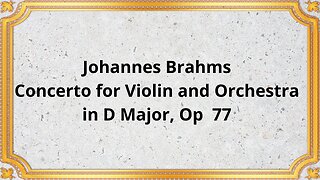 41:38
41:38
Classical music_Music Inspiration
1 year agoJohannes Brahms Concerto for Violin and Orchestra in D Major, Op 77
15 -
![Jacques Aubert: Concerto for Four Violins in G minor [Op.17 No.6]](https://hugh.cdn.rumble.cloud/s/s8/1/0/p/O/g/0pOgo.0kob-small-Jacques-Aubert-Concerto-for.jpg) 10:08
10:08
DoseOfChill
6 months agoJacques Aubert: Concerto for Four Violins in G minor [Op.17 No.6]
521 -
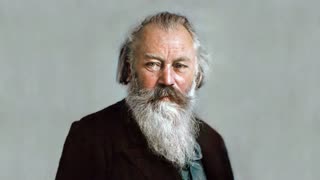 40:44
40:44
Classical Music P.D.
1 year agoViolin Concerto, in D major, Op.77- Johannes Brahms 'Schwalbé - Ansermet - 1964'
20 -
![Johann Gottlieb Goldberg: Harpischord concerto in D minor [DürG 16]](https://hugh.cdn.rumble.cloud/s/s8/1/E/i/8/b/Ei8bo.0kob-small-Johann-Gottlieb-Goldberg-Ha.jpg) 34:07
34:07
DoseOfChill
6 months agoJohann Gottlieb Goldberg: Harpischord concerto in D minor [DürG 16]
671 -
 45:30
45:30
Classical music_Music Inspiration
1 year agoJohannes Brahms Concerto №2 for Piano and Orchestra in B flat major, Op 83
3 -
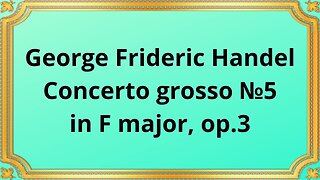 10:27
10:27
Classical music_Music Inspiration
1 year agoGeorge Frideric Handel Concerto grosso №5 in F major, op.3
2 -
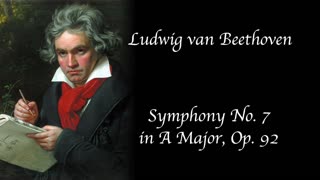 41:47
41:47
ClassicalMusic
1 year agoBeethoven - Symphony No. 7 in A Major, Op. 92
6242 -
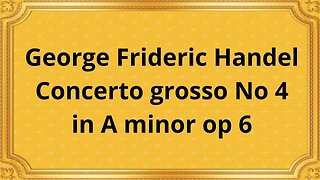 12:05
12:05
Classical music_Music Inspiration
1 year agoGeorge Frideric Handel Concerto grosso No 4 in A minor op 6
7 -
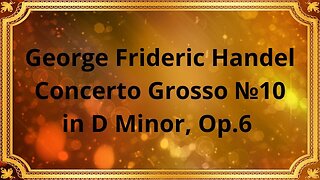 16:01
16:01
Classical music_Music Inspiration
1 year agoGeorge Frideric Handel Concerto Grosso №10 in D Minor, Op.6
1 -
 9:55
9:55
byrnesmusic
4 months agoJohannes Brahms – Andante, Op. 5 (String Orchestra)
58